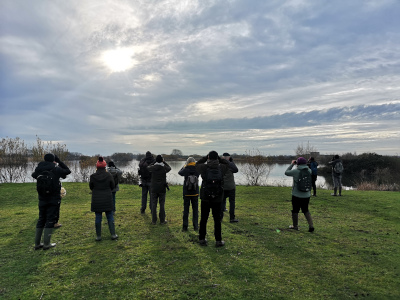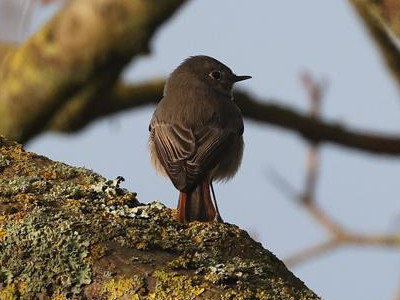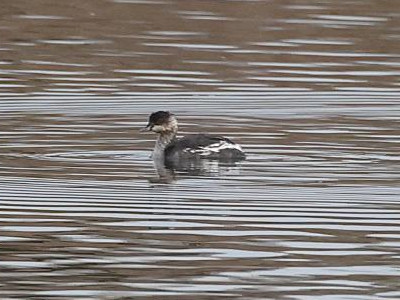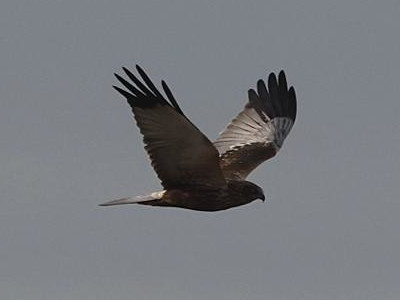 Past Events
Past Events
Walk 26 November 2023
2023-11-26
NOVEMBER BIRD WALK

We had a good turn-out of 16 for today’s Friends’ walk to Castle Water, in weather that was grey and cool but clear and very still so that sounds could easily be heard, be they birds, church bells, Sunday motorbikes or the trumpeting of the Marshlink as it approached Rye Station.
In order to reach that part of the reserve, we have to walk for 15 minutes up Harbour Road, which I tend to see as birdless, so sometimes punctuate that part of the trip with information about the village and its history. However this dismissal is unjustified, for there are quite lot of birds to be seen. Apart from marshland species like Gulls and Waders passing overhead, and garden birds like Sparrows, Robins and Blackbirds ,there was this morning a Mistle Thrush broadcasting its rich contralto to the whole neighbourhood from the top of the tallest Sycamore. We hear it every spring, when it can still be heard well down the track to the Discovery Centre, then after a few months’ pause, it sings again from late autumn, really getting under way from the solstice.

A little further on, a Robin-shaped bird attracted attention as it perched on the roof of an asbestos shed in an overgrown yard. Though anonymous in silhouette, the game was given away when its tail quivered, revealing it as a Black Redstart, a bird which breeds right the way from central China to W Europe, where it finds the Channel a disincentive. So once you cross the water, you can find it in almost every town and farm, but at RHNR we see them only on migration or in winter. It is a scarce breeder in England, preferring industrial and derelict sites to the (similar) rocky mountain habitat where it can be found right up to the snow-line, and a small number of pairs can be found between Cliff End and Hastings Town Centre. By the way, this one wasn’t Black but grey, a female or young male.
While we were watching this little bird, showing its red tail as it flickered around the black anchor across the road, there were Long-tailed Tits and Goldcrests foraging in the roadside Sycamores and Golden Plovers racing overhead.

We saw or heard 62 species – see the list below (not everyone sees everything) – including Marsh Harriers, Buzzards, Sparrowhawks, a Peregrine, Ravens, flocks of Fieldfares just in from Scandinavia and masses of wildfowl at Castle Water including Shelduck – just back from moulting on safe sand-banks in Heligoland – and a Black-necked Grebe, first noted a couple of days ago. If it is the same individual – and its habits suggest so – it first arrived in March 2021 then sat in very much the same spot for the rest of the year, moulting into glamorous breeding plumage without finding a mate to be impressed by it. The bird remained throughout 2022 until this spring when it vanished – till now. Where has it been over the summer? Did it find love? This is another bird which can be found nesting from just outside Calais right into Central Asia but is scarce in England – mostly in the E & Central areas. It’s another example of how Rye Harbour is On The Edge.

These walks are a convivial way to share information, knowledge and skills with everyone finding something to contribute, from an extra (maybe better) pair of eyes to the latest useful app or experience from different regions. Leaders do their best to make sure everyone sees or hears the birds, learns how to look for and identify them, understands what the birds are doing, where they’re from and where, if anywhere, they’re going.
https://app.bto.org/birdtrack/pubcon/shared?subId=SUB47721064